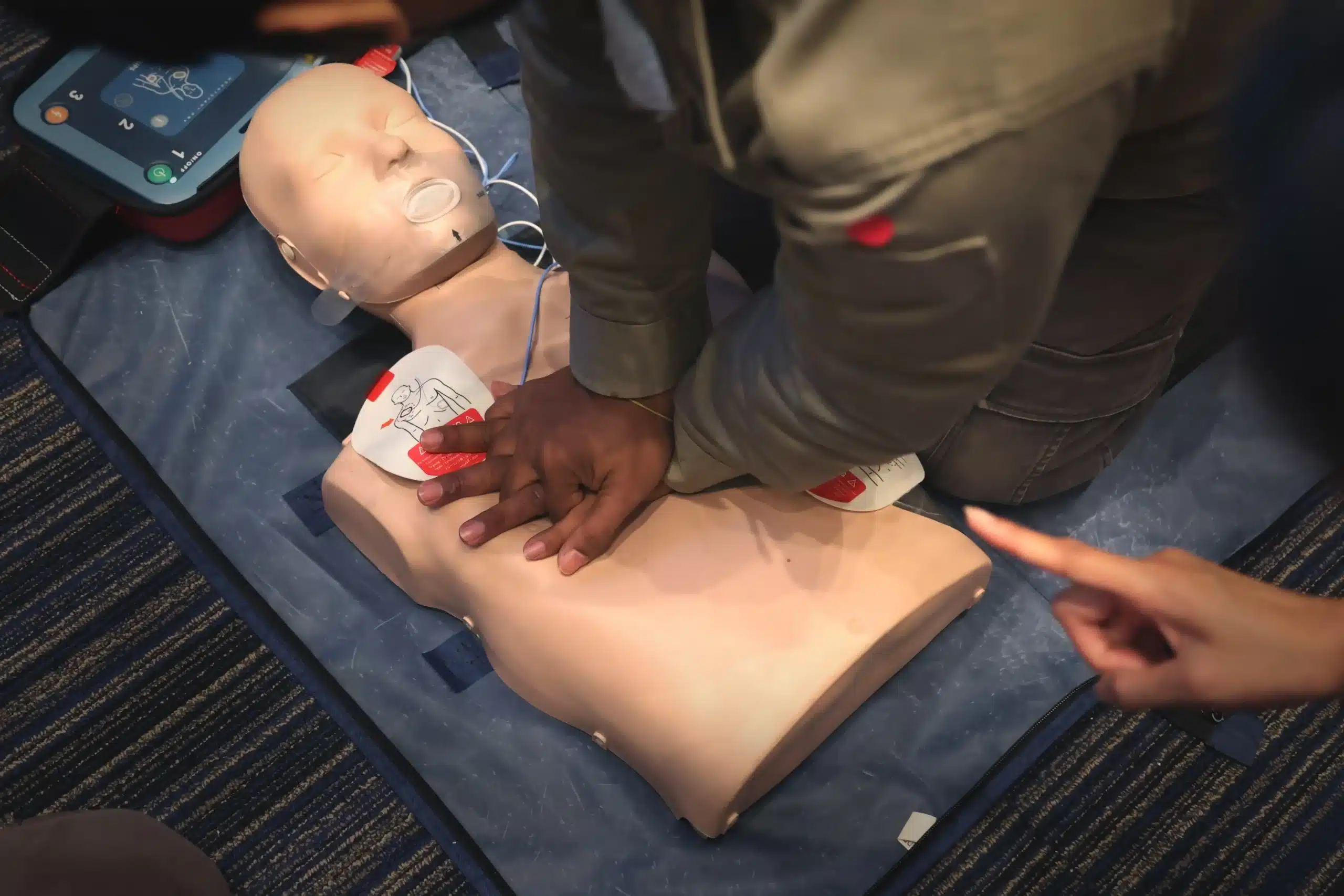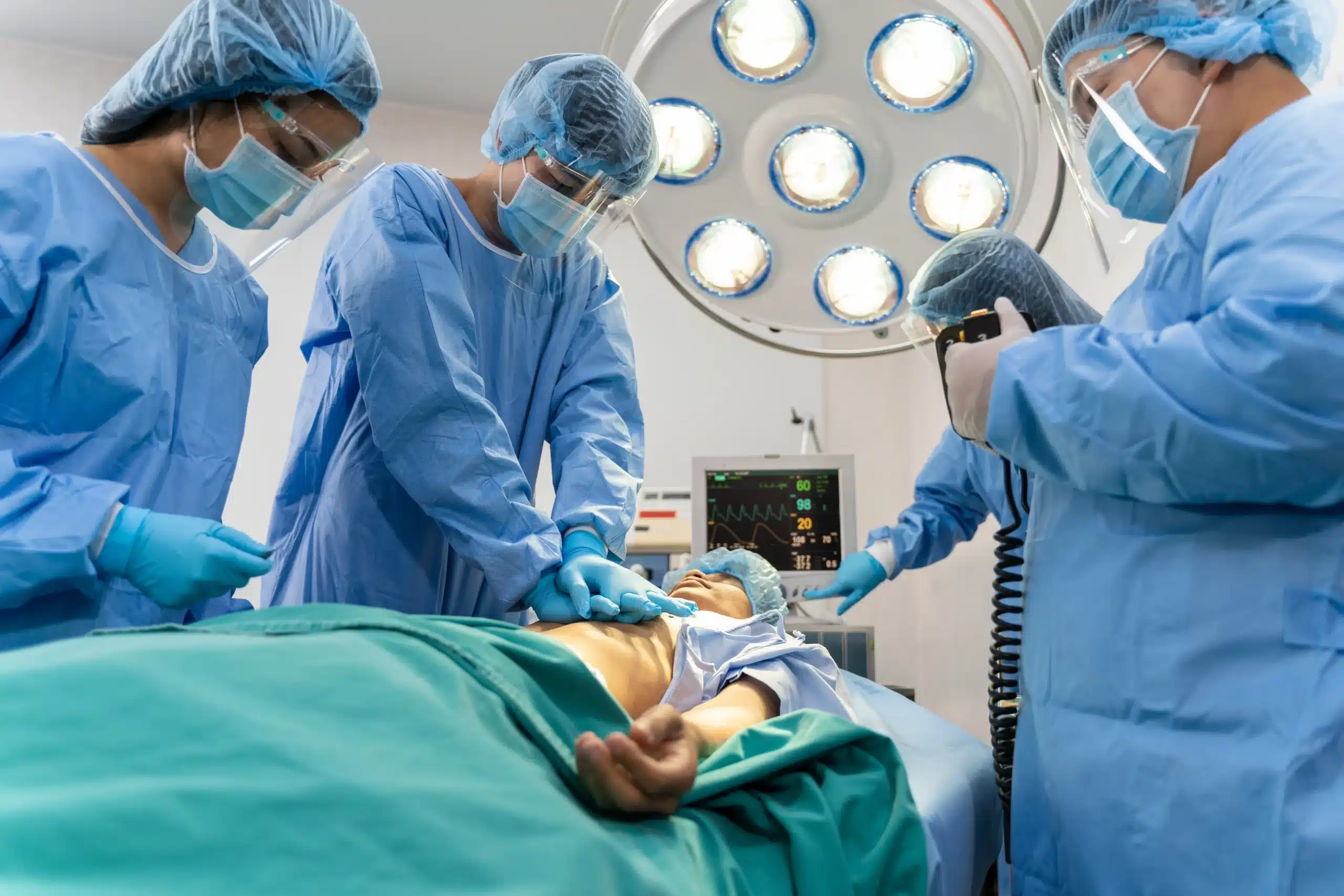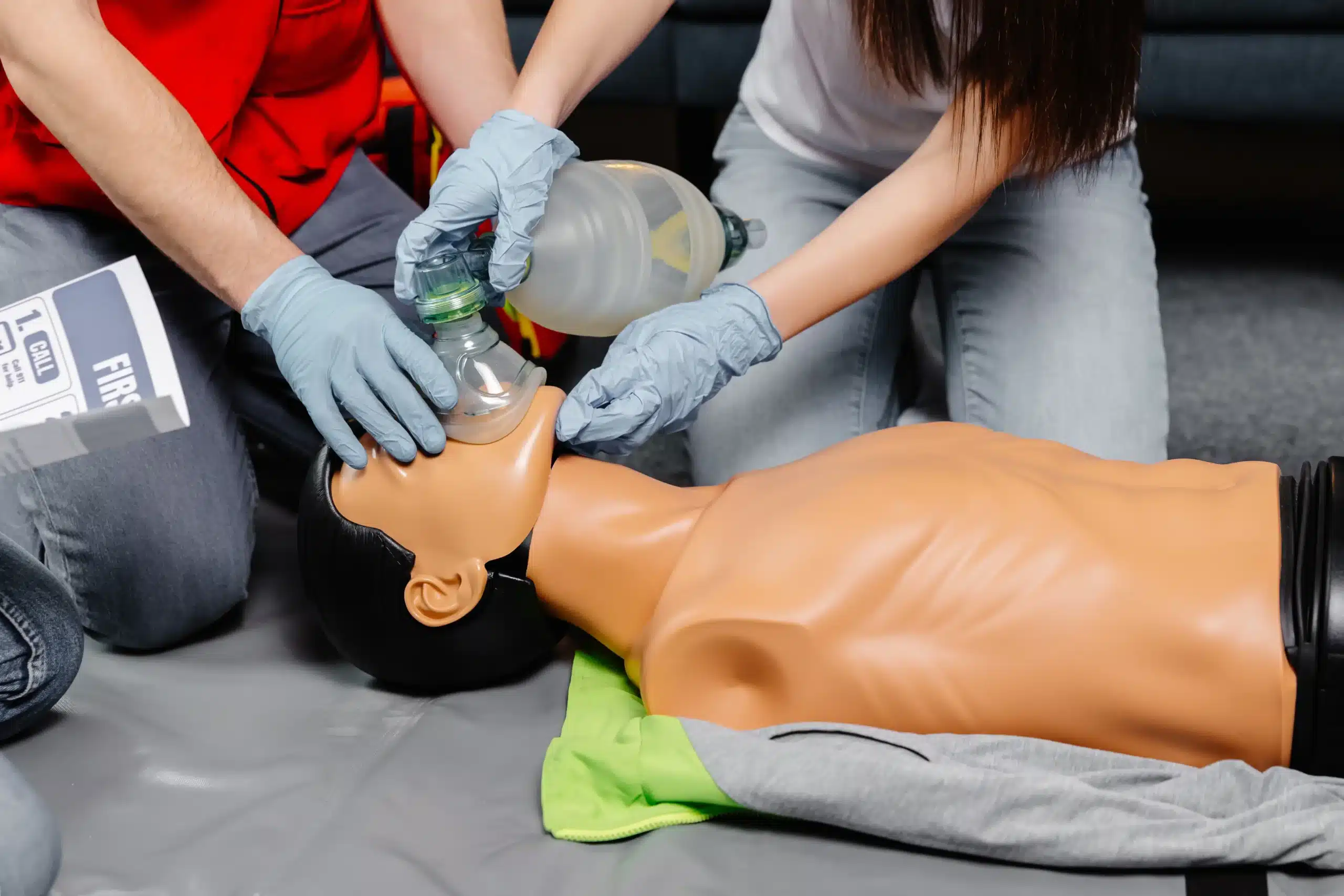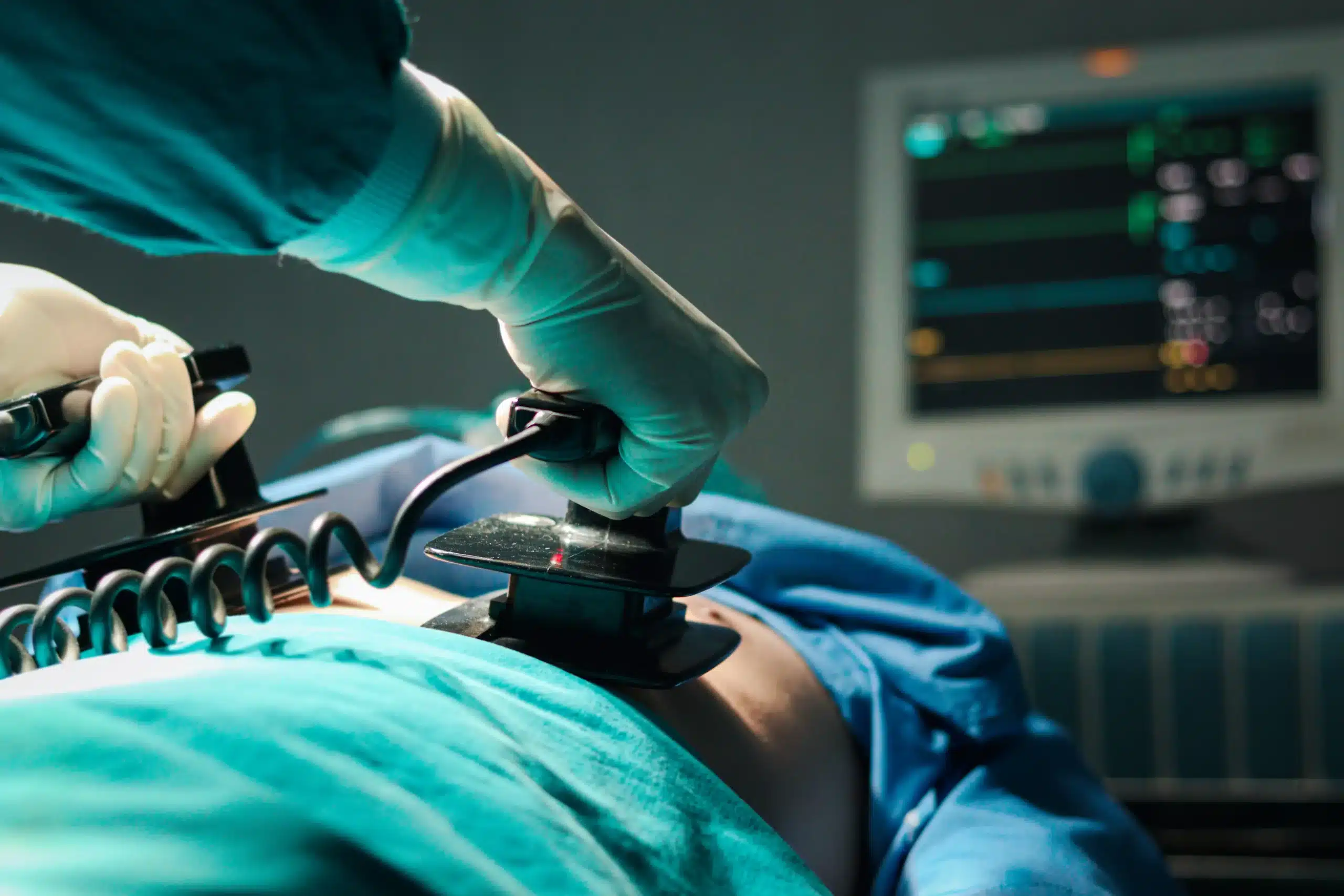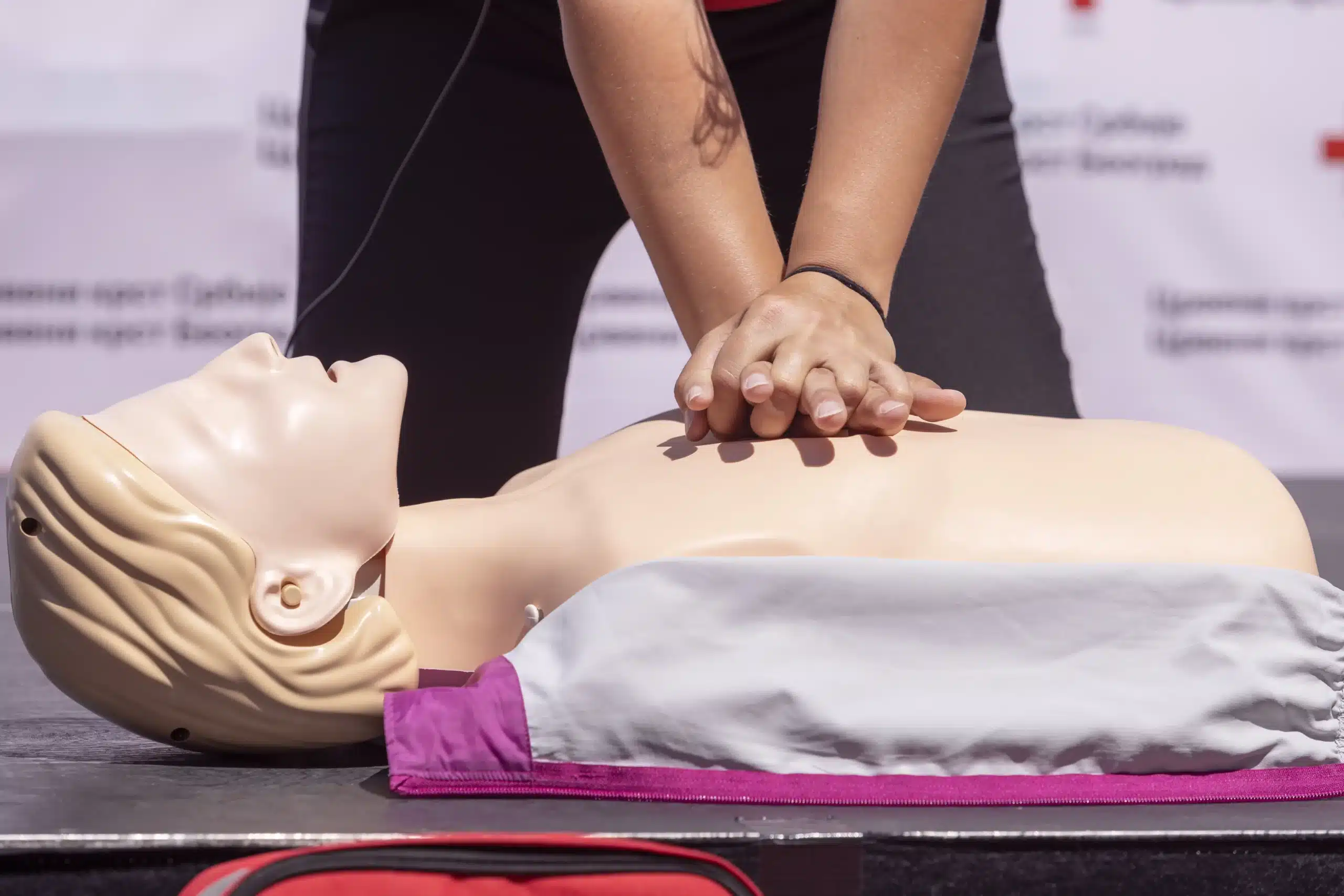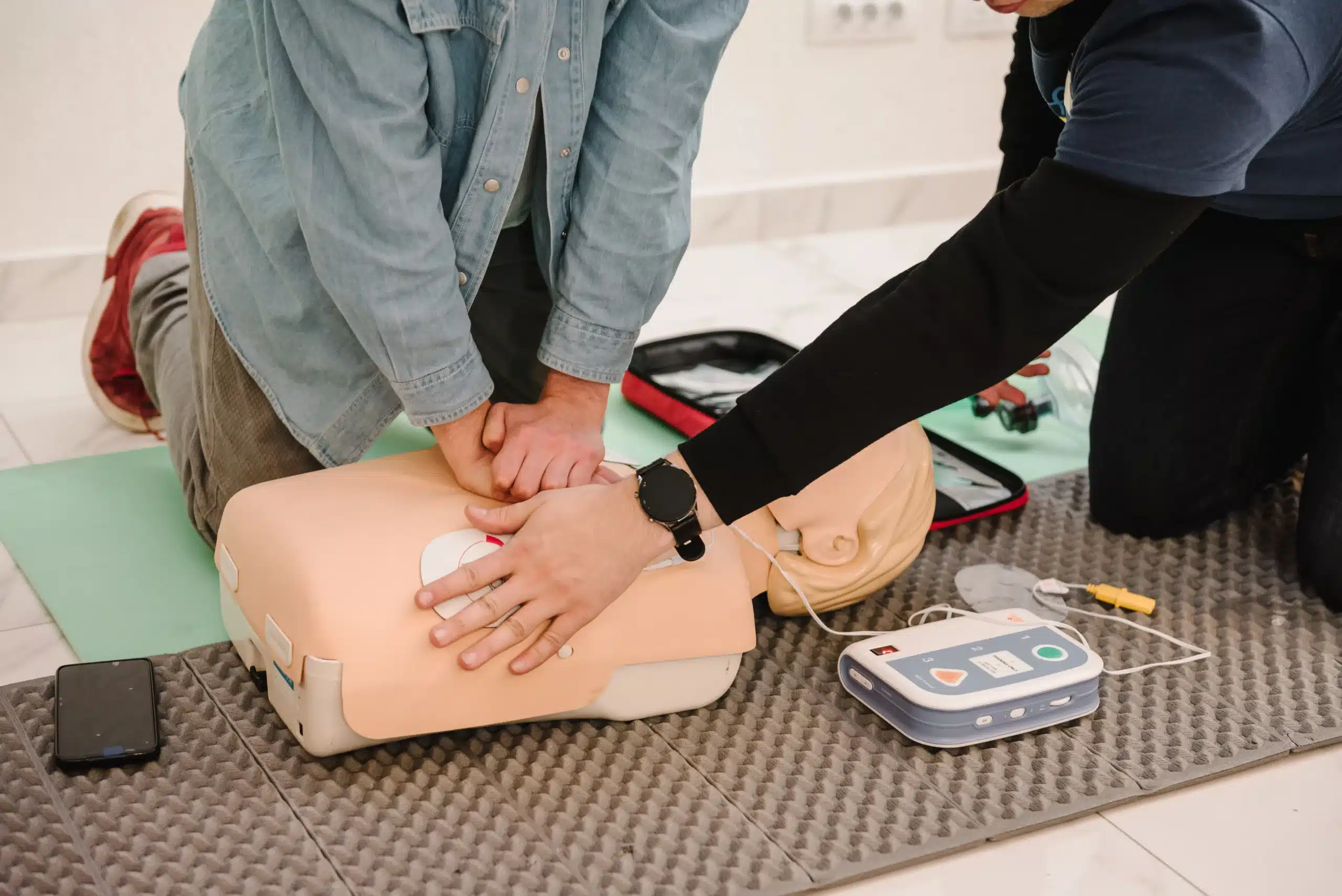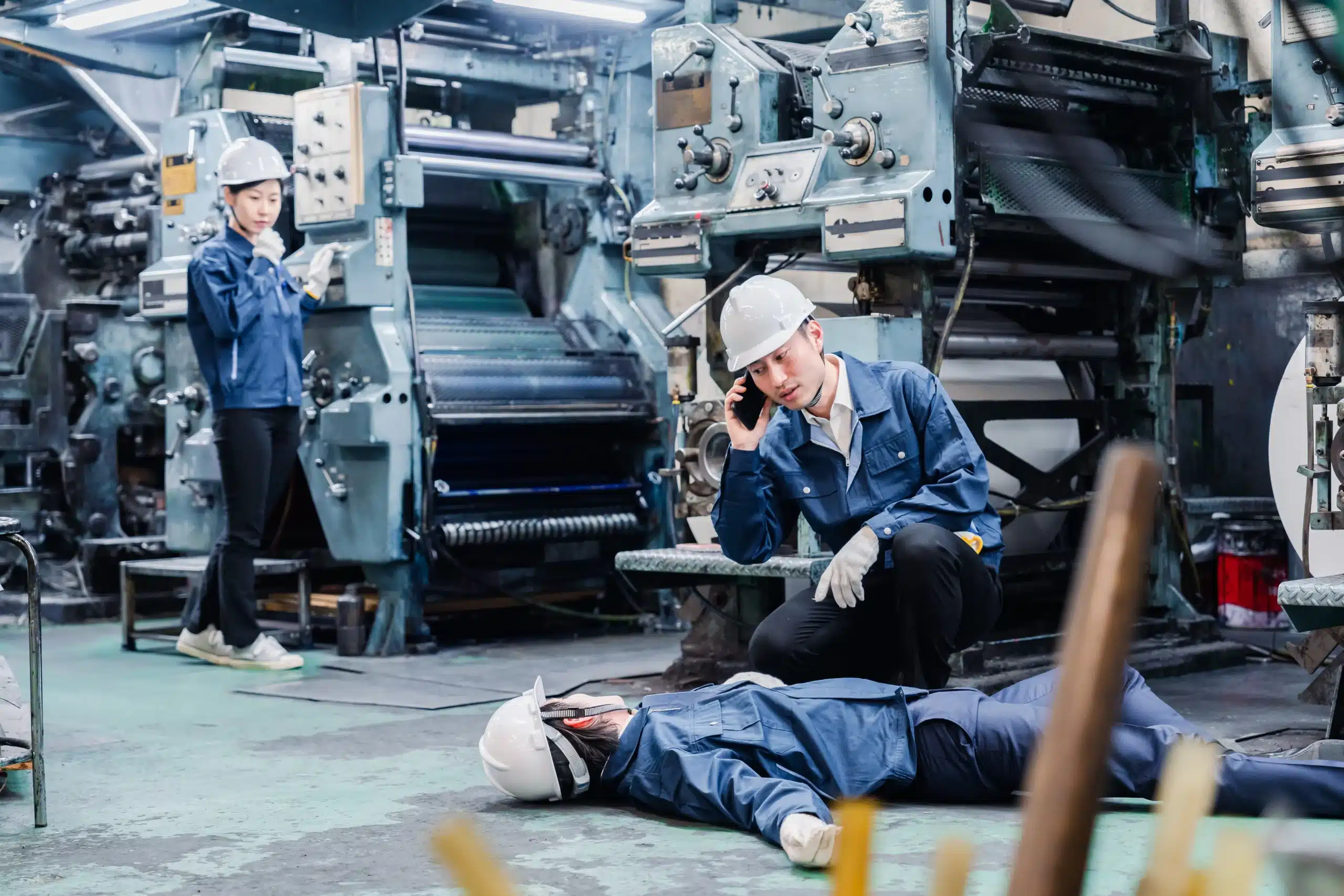In the face of a medical emergency, seconds can matter. Being equipped with Basic Life Support (BLS) skills can make all the difference. If you’re in Oakland and looking to become BLS certified, this guide will walk you through everything you need to know. We’ll explore the various BLS classes in Oakland, discuss the costs and different learning formats available, and highlight the benefits of becoming certified. Whether you’re a healthcare provider or simply someone who wants to be prepared, this guide will help you find the right BLS training in Oakland to empower you to act confidently and potentially save a life.
Key Takeaways
- BLS skills empower everyone: From healthcare professionals to concerned community members, learning CPR, AED use, and airway management can make a real difference in a crisis.
- Accessible BLS training fits your life: Explore various class formats—in-person, hybrid, or online—to find one that aligns with your schedule and preferred learning style. Reputable providers offer convenient options throughout Northern California.
- BLS certification offers lasting benefits: Beyond the classroom, it builds confidence, enhances professional credibility, and most importantly, equips you to respond effectively in emergencies, potentially saving lives.
What are BLS Classes & Why are They Important?
Basic Life Support (BLS) classes teach the skills needed to respond to life-threatening emergencies. These courses equip you to provide critical care until professional help arrives. BLS certification is essential for healthcare providers and increasingly valuable for anyone who wants to be prepared for unexpected medical situations. Understanding the core components and dispelling common misconceptions surrounding BLS training highlights its significance.
Learn Life-Saving Skills
BLS certification goes beyond basic CPR. You’ll learn how to use an automated external defibrillator (AED), a portable device that can restore a normal heart rhythm. The training also covers essential airway management techniques and how to help someone who is choking. These skills can make a real difference in the first few minutes of a medical crisis, potentially saving a life. From healthcare professionals and childcare providers to concerned community members, BLS training offers invaluable skills for a wide range of individuals.
Debunking BLS Training Myths
One common misconception is that BLS certification is only for emergency responders. This isn’t true. While essential for healthcare professionals, BLS training benefits everyone. Knowing how to perform CPR and use an AED can empower you to assist anyone in need. Another myth is that BLS certification requires a huge time commitment. These courses are designed to be efficient and accessible, fitting into busy schedules. Some also believe that BLS is overly complex. BLS training focuses on practical skills and clear instructions, making it straightforward for anyone to learn. Understanding these facts makes it clear that BLS training is valuable for everyone.
Top BLS Class Providers in Oakland
Finding the right BLS class can feel overwhelming, so we’ve compiled a list of reputable providers in Oakland to help you get started. Each offers a slightly different learning experience and schedule, so take a look and see which one best fits your needs.
Safety Training Seminars
Safety Training Seminars, a woman-owned AHA Training Center, offers high-quality American Heart Association BLS, ACLS, PALS, CPR, and First Aid courses right here in Oakland. They prioritize convenience, with classes offered every day of the week, making it easier to fit these life-saving skills into your busy schedule. Learn more about their BLS course.
American Red Cross
The American Red Cross is a well-known provider of BLS certification and renewal training in Oakland. Geared towards healthcare providers, their courses cover essential life-saving skills, including CPR, AED use, and airway management. You can become certified in as little as 4.5 hours, depending on the course format.
CPR Certification Oakland
CPR Certification Oakland offers American Heart Association (AHA) certified CPR and First Aid classes, including BLS training. Their program covers CPR and AED use for adults, children, and infants. They emphasize small class sizes for more personalized instruction and feedback. Certifications from these courses are widely accepted by employers.
Oakland Fire Department
The Oakland Fire Department offers CPR and First Aid training programs for the Oakland community. They focus on empowering individuals with the skills to respond effectively in emergencies. Check their website for upcoming courses.
BLS Class Costs & Value
Typical Price Range
In Oakland, BLS renewal courses certified by the American Heart Association typically cost around $64.95. This is a standard price among many respected training centers in the area, like Safety Training Seminars, offering competitive rates and high-quality instruction. New certifications might be slightly more expensive due to increased training time. Knowing this benchmark helps you compare options and find a course that fits your budget. For added value, check out our low price guarantee.
Considering Additional Fees
Look beyond the sticker price when budgeting for your BLS certification. Some training centers may have additional fees for study materials, online resources, or certification cards. Understanding the full cost upfront helps you avoid unexpected expenses. This guide to BLS, ACLS, and PALS courses in Oakland offers a transparent breakdown of course pricing.
Value & ROI
While cost is a factor, consider the value of BLS training. BLS certification equips you with the skills to respond effectively in emergencies. This knowledge improves patient outcomes and builds confidence in your abilities. Although training requires a time commitment, the ability to provide immediate care during emergencies makes it invaluable. Whether you’re a healthcare professional or someone who wants to be prepared, the benefits extend beyond the classroom. This article on BLS dispels common misconceptions about the training.
BLS Class Formats & Duration
Choosing the right BLS class format depends on your learning style and schedule. Let’s break down the most common options available.
In-Person Classes
In-person BLS classes offer a hands-on learning environment ideal for mastering essential life-saving techniques. You’ll work directly with an instructor, receive immediate feedback, and practice skills like CPR, AED use, and airway management in a realistic setting. This direct interaction can build your confidence and ensure you’re fully prepared to respond in an emergency. Safety Training Seminars offers in-person BLS training throughout Northern California, providing convenient access to high-quality instruction.
Online Options
If your schedule is tight, online BLS courses offer valuable flexibility. You can complete the theoretical coursework at your own pace, fitting it around your other commitments. This blended learning approach often combines online modules with a shorter, in-person skills session, allowing you to learn the fundamentals online and then demonstrate your proficiency in person. The American Red Cross offers this blended learning format, making BLS certification more accessible.
Hybrid Courses
Hybrid courses combine the best of both worlds, offering a mix of online and in-person instruction. This format typically involves completing online modules covering the theoretical aspects of BLS, followed by an in-person skills session to practice and refine your techniques. Hybrid courses often require a total time commitment of about 3-4 hours, making them a convenient option for busy professionals. Our RQI classes provide a fast and efficient hybrid learning experience.
Time Commitment
The time you’ll need to dedicate to BLS training varies depending on the format. Traditional in-person classes typically last 4–5 hours. Hybrid courses, with their combined online and in-person components, can often be completed in 3–4 hours. Consider your availability and preferred learning style when deciding which format best suits your needs. For a quick overview of CPR class options in Northern California, take a look at our CPR class directory.
BLS Certification: What You Need to Know
Get Certified
Becoming BLS certified involves completing a course through a recognized provider, such as the American Red Cross or the American Heart Association (AHA). These courses cover essential life-saving skills, from CPR and AED use to airway management. Safety Training Seminars offers convenient and affordable options for BLS certification, ensuring you receive high-quality training that meets AHA guidelines. You’ll learn how to respond effectively in emergencies, providing crucial care until professional medical help arrives.
Validity & Recertification
BLS certification typically lasts for two years. To maintain your credentials and stay up-to-date with the latest techniques, you’ll need to recertify before your certification expires. Recertification courses cover any updates to guidelines and reinforce essential skills. This ongoing training ensures you’re always prepared to provide effective care. Plan and schedule your recertification course in advance to avoid a lapse in your certification.
Industry Recognition
BLS certification from reputable organizations like the AHA is widely recognized across various industries. This is particularly important for healthcare professionals, first responders, and anyone working in a field requiring CPR and first-aid knowledge. Holding a valid BLS certification demonstrates your commitment to providing high-quality care and enhances your professional credibility. For those seeking employment in healthcare, BLS certification is often a prerequisite. Contact us to learn more about our convenient class options.
Choose the Right BLS Class
Finding the right BLS class takes a little research, but it’s worth the effort to ensure a positive and effective learning experience. Here’s what to consider:
Assess Your Schedule & Learning Style
BLS classes in Oakland offer various formats and schedules. Some classes take as little as 4.5 hours, making it easier to fit training into a busy life. Consider your availability and how you learn best. Do you prefer a traditional classroom or a blended learning experience with online modules? Choosing a format that matches your learning style will help you get the most out of the class.
Evaluate Providers & Features
Not all BLS providers are the same. Look for reputable organizations like Safety Training Seminars, a woman-owned business offering high-quality AHA-certified courses. Consider established providers like the American Red Cross and CPR Certification Oakland. Compare factors like instructor experience, course materials, and any extra resources or support they offer. This will help you find the best fit for your needs.
Prerequisites
Before registering for a BLS class, check for any prerequisites. For renewals, you’ll likely need a current BLS provider card, as explained in this guide to BLS renewal. AHA BLS classes in Oakland are open to a wide range of people, from healthcare workers to the general public. If you’re unsure about the requirements, contact the provider directly to confirm you’re eligible for their courses.
Find BLS Class Discounts & Deals
Getting BLS certified shouldn’t break the bank. Here are a few smart ways to find discounts and deals on BLS classes in Oakland:
Group Rates & Bundles
If you’re training a team, ask training centers about group discounts. Many providers, like CPR Certification Oakland, offer reduced rates for on-site group training. This is often more affordable than individual registrations. Bundling BLS certification with First Aid training can also sometimes save you money. Contact providers to discuss your group’s needs and explore potential cost savings. CPR Certification Oakland offers on-site group training and may be a good option.
Seasonal Promotions
Keep an eye out for seasonal promotions. Some organizations, like the American Red Cross, occasionally offer discounts on training courses or materials. Check their websites or subscribe to their newsletters to stay informed about potential deals. While these promotions aren’t always available, they can save you money if your schedule is flexible.
Low Price Guarantees
Some BLS training providers offer low price guarantees, promising to match or beat competitor pricing. If you find a lower advertised price for a comparable BLS course, contact your preferred provider. Safety Training Seminars offers a low price guarantee, ensuring competitive pricing. Researching and comparing prices can often lead to significant savings. CPR Certification Oakland also emphasizes affordability, with clearly listed prices for their courses.
Prepare for Your BLS Class
Getting ready for your BLS class doesn’t have to be stressful. A little preparation goes a long way in ensuring you have a smooth and productive learning experience. Here’s what you should know:
What to Bring
While your BLS provider manual will be provided in class, bringing a notebook and pen can be helpful for taking extra notes or jotting down questions. Some students find it beneficial to bring a small snack and water, especially for longer class sessions. Most importantly, remember your current BLS provider card as this confirms your eligibility for recertification. If you’re a first-time student, bring a government-issued photo ID.
Pre-Course Materials
Many BLS course providers offer pre-course materials to help you familiarize yourself with the core concepts before class. Reviewing these resources, such as a BLS handbook, can give you a head start and allow you to focus on mastering the practical skills during the in-person training. Check with your chosen provider, like Safety Training Seminars, to see what resources they offer.
Physical Requirements & Dress Code
BLS classes involve hands-on practice of skills like CPR and using an AED. While you don’t need to be an athlete, a reasonable level of physical fitness is necessary to perform these skills effectively. Wear comfortable clothing that allows for a full range of motion, such as athletic wear or scrubs. Avoid restrictive clothing or anything that might interfere with your ability to participate in the practical exercises. If you have any physical limitations or concerns, discuss them with your instructor beforehand. They can offer modifications or suggestions to ensure you can fully participate and benefit from the training.
The BLS Learning Experience
When you take a BLS class, you’re not just learning concepts—you’re developing crucial skills. This section explores the core components of an effective BLS learning experience.
Hands-on Training
BLS classes aren’t about passive listening; they’re about active participation. High-quality BLS training emphasizes hands-on learning. You’ll work with training manikins, practicing chest compressions, rescue breaths, and other essential techniques. This practical experience builds muscle memory and confidence, preparing you to respond effectively in real-life emergencies. Safety Training Seminars offers this type of hands-on training to a diverse range of students.
Feedback Devices
Modern BLS training often incorporates feedback devices. These tools provide real-time feedback on the depth and rate of your compressions, helping you refine your technique and ensure you’re delivering effective CPR. This focus on precision ensures you’re learning the most effective techniques. Research supports the use of these devices, showing that objective feedback leads to significant improvements in BLS skills.
Instructor Expertise & Support
A skilled instructor is essential for a positive learning experience. Look for certified instructors with extensive experience. A supportive instructor can answer your questions, provide personalized guidance, and create a comfortable learning environment. This expert-led approach ensures you receive high-quality instruction and feel confident in your abilities. Safety Training Seminars is an example of a training center with experienced, certified instructors.
Benefits of BLS Certification
BLS certification isn’t just about adding a credential to your resume; it’s about equipping yourself with the skills and confidence to make a real difference. Whether you’re a healthcare professional, a concerned parent, or simply someone who wants to be prepared, understanding the benefits of
Improve Emergency Response
BLS certification provides comprehensive training in essential life-saving techniques. You’ll learn how to use an automated external defibrillator (AED), manage airways, and assist someone who is choking. These skills are crucial for responding effectively in emergencies, allowing you to provide immediate assistance while waiting for professional medical help. This rapid response can significantly improve the outcome of a cardiac arrest or other medical crisis. Knowing how to assess a situation and take decisive action can be the difference between life and death.
Improve Patient Outcomes
For healthcare providers, BLS certification is more than just a job requirement; it’s a commitment to patient safety and improved outcomes. Mastering BLS techniques can dramatically increase a patient’s chances of survival and recovery during critical situations. By adhering to the latest BLS guidelines and consistently practicing these skills, healthcare professionals can deliver the highest standard of care. This commitment to ongoing training and skill development is a cornerstone of quality healthcare.
Build Confidence & Credibility
Earning your BLS certification demonstrates a commitment to preparedness and professionalism. Completing a recognized program, like the American Heart Association’s RQI program, builds confidence in your ability to handle emergencies and enhances your credibility, especially in healthcare. This certification assures employers, colleagues, and patients that you possess the necessary skills and knowledge to respond effectively under pressure. For medical professionals in Oakland seeking a streamlined certification process, the RQI program offers a fast and efficient path to obtaining your BLS, ACLS, and PALS certifications.
Related Articles
- BLS Classes in Sacramento: Your Complete Guide – San Francisco Bay Area CPR Classes
- CPR Training in Sacramento: Your Ultimate Guide – San Francisco Bay Area CPR Classes
- 7 Common CPR Myths Debunked – San Francisco Bay Area CPR Classes
- BLS CPR Classes in Bay Area, CA – San Francisco Bay Area CPR Classes
- CPR, BLS, ACLS, PALS, and First-aid classes in SF Bay Area, CA
Frequently Asked Questions
Is BLS certification only for healthcare professionals? Not at all! While it’s definitely a must-have for healthcare providers, BLS training is incredibly valuable for anyone who wants to be prepared for emergencies. Think childcare providers, teachers, coaches, parents – really, anyone who wants to learn life-saving skills.
What’s the difference between BLS and CPR? BLS builds upon basic CPR. It includes CPR but also covers how to use an AED, clear airways, and give rescue breaths. It’s a more comprehensive approach to emergency care.
How long does it take to get BLS certified? The time commitment depends on the course format you choose (in-person, blended, or online) and whether you’re getting certified for the first time or renewing. Generally, you can expect to spend somewhere between three and five hours on training.
How much does a BLS class cost in Oakland? BLS class costs in Oakland vary, but renewal courses typically run around $65. New certifications might be a bit more. It’s always a good idea to check with specific providers for their pricing and to see if they offer any discounts.
How often do I need to renew my BLS certification? BLS certifications are typically valid for two years. To keep your skills sharp and stay up-to-date on the latest guidelines, you’ll need to recertify before your current certification expires.
